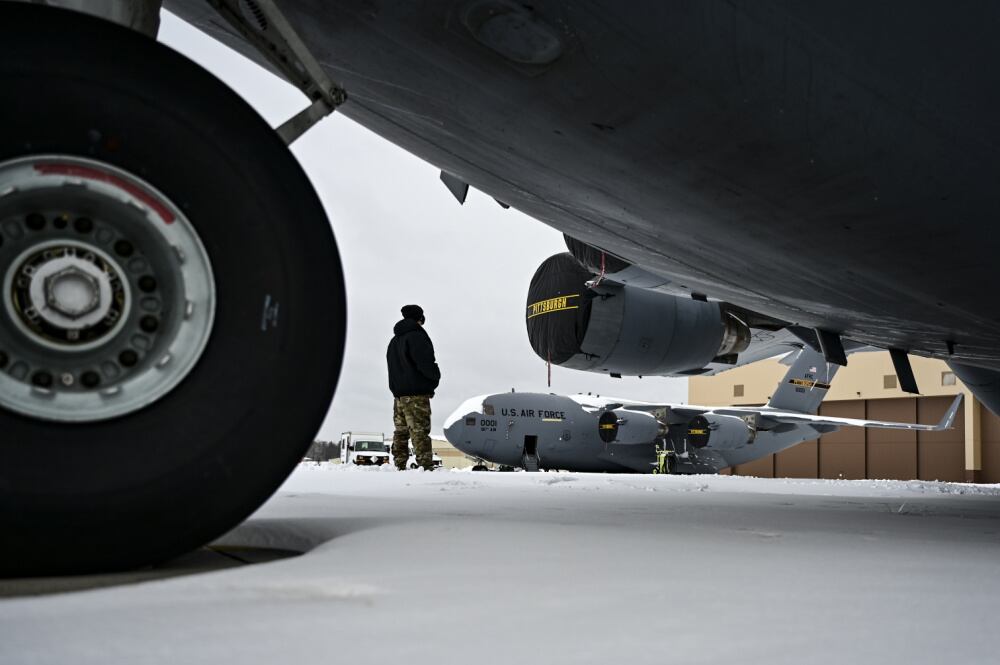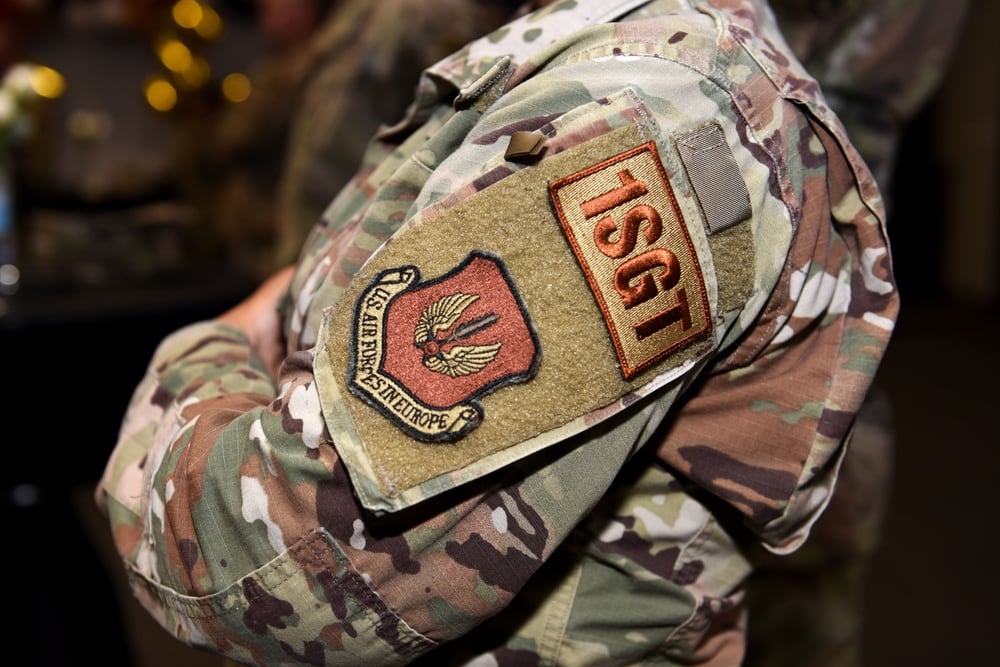The Air Force has finalized more than two dozen updates to its rules governing how airmen should dress and act in uniform, from making pantyhose optional to letting men grow their hair out a little longer.
The Dec. 3 update erases some of the minutia that defines military life: dictating where an airman’s hands should be when they walk, whether their workout clothes should be tucked in, and even whether they are allowed to talk on the phone while walking. Officials argue that doing away with requirements that don’t affect airmen’s ability to do their jobs will help the force focus on the work that matters.
RELATED

Airmen on social media rejoiced at regaining a sliver of control over their own choices.
“Last year we had hands in pockets, ball caps and morale patches on our page’s Christmas list,” said a post on the popular Air Force amn/nco/snco Facebook page Wednesday. “Now what the heck [are] we supposed to wish for?”
The updated regulation comes two months later than leaders promised when they announced the pending changes in August. Here’s what’s included in the list:
- Conduct: Airmen may put their hands in their pockets while standing or walking. Airmen may also use cell phones while walking, including on speakerphone, with Bluetooth earpieces and for text messaging.
- Hair: Men may grow their hair out to 2.5 inches in length, and women may wear 2-inch wide hair accessories to better control thicker or curlier hair. Men are allowed to use a procedure called micropigmentation to get microscopic ink dots tattooed on their scalp that creates the appearance of hair. Airmen can dye their hair to a natural shade of brown, blonde, brunette, red or black, or a natural-looking combination like salt-and-pepper hair. Women may wear false eyelashes that measure up to 14 millimeters long and are the same shade as their natural lash color. Airmen who are allowed to wear beards must keep them trimmed to one-quarter inch or shorter.
- Clothing: Commanders can let their airmen tuck in their Operational Camouflage Pattern coat, and roll up the cuffs twice while on duty. Airmen may wear Velcro pen and pencil holders on their OCP sleeves; morale patches on their OCPs and two-piece flight duty uniforms; sewn-on nametapes and insignia on OCP fleece jackets; and unit patches or organizational symbols on their OCP T-shirts. Women are no longer required to wear pantyhose with their dress uniforms. Commanders of maintenance, industrial and other related squadrons can let their airmen wear sage-colored coveralls. For physical training, short- and long-sleeve shirts can be worn tucked in or untucked, and airmen may don sweatbands as part of their workout gear.
- Accessories: Airmen may wear “tactical” ball caps, such as those with a camouflage pattern. People who are issued berets for jobs like security forces can continue to wear them even while away on a special assignment or at a professional development course. Airmen may wear transparent piercing spacers in their lower earlobes, as long as the piercing hole isn’t large enough to let light shine through, as well as a ring on their thumb.
- Badges: Those issued multidomain warfare badges must wear them under the same rules as other aeronautical or space badges. Inter-American Air Forces Academy badges can become part of the uniform as well, and air adviser tabs can be worn permanently. Airmen in certain specialties may permanently wear an Air Force Honor Guard badge. Foreign aviation, medical and parachutist badges can be worn outside of the country that issued them.
Read the full regulation here.
Rachel Cohen is the editor of Air Force Times. She joined the publication as its senior reporter in March 2021. Her work has appeared in the Washington Post, the Frederick News-Post (Md.), Air and Space Forces Magazine, Inside Defense, Inside Health Policy and elsewhere.





